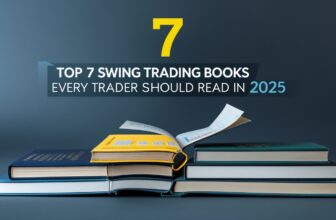
The EUR/USD pair is one of the most traded currency pairs in the world. Forecasting its movements can help traders make informed decisions and potentially maximize their profits. Understanding the factors that influence this exchange rate, such as economic data, central bank policies, and technical indicators, is essential for anyone looking to engage in forex trading.
I dive into various methods for predicting the EUR/USD rate, combining both fundamental and technical analyses. This approach allows me to analyze past trends and current market conditions to generate accurate forecasts. With insights into the European Central Bank’s monetary policy and upcoming economic reports from the U.S., I can assess how these elements might affect the exchange rate in the near future.
Whether you are an experienced trader or new to forex, this exploration of the EUR/USD forecast will provide valuable insights to guide your trading strategies. The information can equip you with the knowledge needed to navigate the uncertainties of the forex market successfully.
Key Takeaways
- Understanding the EUR/USD forecast involves analyzing economic data and central bank policies.
- Both fundamental and technical analyses are crucial for making informed trading decisions.
- Insights into this currency pair can help traders navigate the forex market effectively.
Understanding The EUR/USD Forecast

The EUR/USD forecast is crucial for traders and investors interested in the forex market. It helps them make informed decisions about buying or selling this key currency pair. Understanding the dynamics involved can lead to better strategic choices that affect trading outcomes.
What Is The EUR/USD Forecast?
The EUR/USD forecast predicts the future price movements of the euro to the US dollar, commonly referred to as the euro dollar or euro us dollar. As a major dollar pair, it is one of the most actively traded currencies in the forex market, influenced by economic conditions in both the Eurozone and the United States.
Traders rely on both technical and fundamental analysis to make accurate forecasts. Technical analysis often involves studying the daily chart, where the chart shows key levels of support and resistance, moving averages, and price trends. Fundamental analysis, on the other hand, evaluates US data, inflation trends, interest rate decisions, and economic indicators. For instance, the rate differential between the Federal Reserve and the European Central Bank (ECB) plays a crucial role in currency movements, with rate cuts often impacting the purchasing power of the eurusd.
Recent market behavior shows how the pair traded in response to inflationary pressures and expectations surrounding monetary policy. At times, the pair fell due to concerns over economic growth or rising inflation, while at other times, policy shifts aimed at price stability have driven fluctuations. According to market experts, traders must closely watch upcoming economic reports and interest rate decisions to find the most recent insights on the EUR/USD trend.
Additionally, traders often compare the EUR/USD with other major currencies like the Japanese yen to understand broader market sentiment. By monitoring economic trends and interest rate decisions, traders can make informed choices about when to buy or sell this currency pair.
Why Is The EUR/USD Forecast Important For Traders?
For traders, the EUR/USD forecast is essential for several reasons. First, it allows them to understand potential price movements better. A forecast can highlight trends and help traders make strategic decisions. By analyzing expected changes, traders can anticipate market reactions and position themselves accordingly.
Moreover, the euro to US dollar dynamics can significantly impact global financial markets. Changes in this exchange rate can influence investment decisions and financial stability. Traders often watch the policies of central banks like the European Central Bank and the Federal Reserve, as their actions can lead to volatility.
Understanding the forecast also helps traders manage risks. Knowledge of potential fluctuations empowers them to protect their investments and optimize returns, making this forecast a foundational element in their trading strategy.
Key Factors Affecting The EUR/USD Exchange Rate
Several factors influence the EUR/USD exchange rate, making it crucial for traders to stay updated with the latest EUR analysis and economic data. As one of the most important pairs in the world, the euro-us dollar pair reflects economic conditions in both the Eurozone and the United States of America.
1. Economic Indicators and Market Trends
Key economic indicators, such as inflation data, GDP growth, and weekly unemployment figures, play a vital role in shaping the dollar forecast. For instance, rising inflation in the Eurozone may weaken the euro, while strong job reports in the U.S. can strengthen the us dollar currency. Traders looking at the forecast for tomorrow or the forecast for the next 5 days must analyze these data points to anticipate short-term movements.
2. Central Bank Policies and Interest Rates
Decisions made by the two main central banks, the European Central Bank (ECB) and the Federal Reserve (Fed), significantly impact the EUR/USD. When the Fed announces a rate hike, it often strengthens the us dollar, as the dollar is the counter currency in this pair. Conversely, ECB rate cuts can weaken the euro. Monitoring ECB news and Fed news helps traders make informed decisions.
3. Market Sentiment and Geopolitical Factors
Market sentiment—how investors feel about the economy—affects currency fluctuations. Geopolitical tensions, trade agreements, and shifts in investor confidence all influence the eurusd 2025 forecast and medium-term trends. Analysts rely on chart analysis, particularly the 200-day simple moving average, to gauge long-term momentum.
4. Trading Volume and Technical Analysis
As one of the highest trading volume worldwide pairs, the EUR/USD reacts to major economic releases and technical indicators. The base currency and the US dollar relationship, as well as the fact that the US dollar is the counter currency, mean traders must assess price action carefully. The chart analysis of the end of the week and year earlier trends can provide insights into potential movements in the medium term and next 10 days.
Staying informed about the latest EUR news, central bank policies, and technical indicators will help traders develop more accurate forecasts and enhance their trading strategies.
Fundamental Analysis Of The EUR/USD Pair

In this analysis, I will discuss how various economic indicators, central banks, and geopolitical factors influence the EUR/USD currency pair. Understanding these aspects is crucial for anyone looking to trade or invest in this market.
Economic Indicators Influencing EUR/USD
Economic indicators play a key role in predicting the movement of the EUR/USD pair. Reports such as Gross Domestic Product (GDP), unemployment figures, and durable goods orders provide insights into the economic health of the Eurozone and the United States. For example, a rise in GDP in the U.S. typically strengthens the U.S. dollar against the euro.
Inflation rates are also vital. When inflation in the U.S. increases, the Federal Reserve (Fed) may raise interest rates, making the dollar more attractive. Conversely, if the European Central Bank (ECB) shows signs of tightening monetary policy, the euro could strengthen against the dollar. Thus, keeping an eye on the macroeconomic calendar is essential for traders aiming to capitalize on these shifts.
Role Of Central Banks And Interest Rates
The actions of the Federal Reserve and the European Central Bank significantly impact the EUR/USD exchange rate. Interest rate decisions by these central banks influence currency supply and demand. If the Fed raises interest rates, it tends to attract foreign investment, increasing demand for the U.S. dollar.
Monetary policy differences between the Fed and the ECB create a “rate differential.” A widening gap, where U.S. rates are higher than European rates, can lead to a stronger dollar. Understanding these policies helps me anticipate potential trends in the currency pair. Being aware of each bank’s announcements can provide strategic trading opportunities.
Geopolitical And Market Sentiment Factors
Geopolitical events and market sentiment can drastically affect the EUR/USD pair. Tariffs, trade agreements, and political instability—including tensions in the U.S. or Europe—can create uncertainty in the market. For instance, if there are rising tariffs between the U.S. and the EU, it can negatively impact the euro.
Furthermore, consumer confidence plays a crucial role. High consumer confidence in either region can boost economic outlooks. If consumers feel optimistic in the U.S., the dollar may strengthen against the euro. Monitoring news related to market sentiment allows me to gauge potential shifts in the EUR/USD exchange rate more effectively.
Technical Analysis For EUR/USD Forecast

In technical analysis, I focus on using various tools and indicators to predict how the EUR/USD currency pair might perform. By examining trends and patterns, I can identify potential price movements.
Common Technical Indicators Used
I often use several technical indicators when analyzing the EUR/USD pair. The Simple Moving Average (SMA) is popular for understanding trends over time. A 200-day SMA can show long-term direction, helping me gauge bullish or bearish trends.
Relative Strength Index (RSI) identifies overbought or oversold conditions. An RSI above 70 may indicate that the pair is overbought, while below 30 suggests it may be oversold. Both indicators help me identify key levels of support and resistance, which can predict price movements.
Trend Analysis And Support/Resistance Levels
Analyzing trends is crucial in my technical analysis. I look for support and resistance levels to identify where the price might bounce or reverse. For instance, if EUR/USD approaches the 1.0385 support level, it might bounce back up. Conversely, if it reaches the 1.06 resistance level, sellers may enter the market, creating bearish pressure.
These levels are not fixed but change based on market dynamics and volatility. By regularly monitoring these areas, I can make informed trading decisions that reflect ongoing market sentiment.
Chart Patterns And Candlestick Formations
I pay close attention to chart patterns and candlestick formations, which often provide valuable insights. Bullish patterns, such as double bottoms, suggest that the price is likely to rise. On the other hand, bearish patterns, like head and shoulders, can indicate a potential decline.
I also analyze candlestick formations for short-term trends. For example, a series of bullish candlesticks might suggest increasing interest in EUR/USD, while a pattern of bearish candlesticks could indicate growing selling pressure. By recognizing these formations, I can better predict potential price actions within the market.
Trading Strategies Based On EUR/USD Forecast

When engaging in trading strategies based on the EUR/USD forecast, it’s important to consider several methods that cater to different market conditions. Each strategy has its own approach and timing, which makes understanding them vital for effective trading.
Scalping And Day Trading Strategies
Scalping involves making many trades within a single day to profit from small price changes. I often focus on high liquidity periods, particularly during the London session, when trading volume is highest. This strategy requires quick decision-making and a firm grasp of technical indicators like moving averages and support levels.
For day trading, I typically look for news events that can affect the EUR/USD exchange rate. Economic data releases, like inflation rates or unemployment figures, can create volatility. I often set strict stop-loss and take-profit levels to manage risk. By anticipating price movements based on analysis of candlestick patterns, I can maximize potential gains while minimizing losses.
Swing Trading And Trend Following Strategies
Swing trading allows me to hold positions for several days or weeks. I look for price swings in the EUR/USD pair and use technical indicators to identify entry and exit points. This method works well when I analyze daily and weekly charts. By employing tools like the Relative Strength Index (RSI) or Fibonacci retracement levels, I can find optimal points to enter trades.
Trend following is another effective strategy I use. I identify the prevailing trend and trade in that direction. For example, if the EUR/USD shows a strong bullish trend, I look for pullbacks to enter positions. I find that maintaining a keen awareness of macroeconomic factors, particularly decisions from the European Central Bank and the Federal Reserve, helps in predicting future movements.
Long-Term Investment Approaches
For long-term investment, I focus on the overall economic health of the Eurozone and the U.S. Factors like GDP growth, interest rates, and inflation play critical roles in shaping my strategy. I often utilize a buy-and-hold approach, where I invest in the EUR/USD pair based on fundamental analysis.
I pay close attention to long-term trends and major shifts in monetary policy. If the European Central Bank signals a rate hike while the Federal Reserve maintains steady rates, the EUR may strengthen against the USD. By analyzing broader economic indicators, I can make informed decisions that align with my long-term investment goals.
Risk Management In EUR/USD Trading

Effective risk management is essential for successful EUR/USD trading. It helps minimize losses and protect capital while maximizing potential returns. Here are some key strategies to employ.
Setting Stop-Loss And Take-Profit Levels
Setting stop-loss and take-profit levels is a critical part of my trading strategy. A stop-loss order limits my losses by automatically closing a position when it reaches a predetermined price. I typically set this level based on market volatility and my risk tolerance.
On the other hand, take-profit orders allow me to lock in profits once a position reaches my target price. I often use technical analysis to identify key support and resistance levels, helping me determine these points. By establishing these levels in advance, I can avoid emotional decision-making during high-pressure market conditions.
Managing Leverage And Position Sizing
Managing leverage and position sizing is crucial in the EUR/USD market. Leverage can amplify both gains and losses, so I must use it wisely. I generally recommend a leverage ratio that suits my risk tolerance and trading strategy.
Calculating the size of my position is also essential. I often use the following formula:
[ \text{Position Size} = \frac{\text{Risk Amount}}{\text{Stop-Loss Distance}} ]
By doing this, I can ensure that no single trade puts my capital at significant risk, maintaining long-term trading sustainability.
Avoiding Common Trading Mistakes
I’ve identified several common trading mistakes to avoid in the EUR/USD market. One major mistake is not having a clear trading plan. Without a plan, my decisions can be driven by emotions rather than logical analysis.
Another mistake is ignoring economic news and data releases that influence the EUR/USD pair. Staying informed about central bank policies and macroeconomic indicators is essential. Finally, overtrading can lead to significant losses. I aim to stay disciplined and focus on quality trades rather than chasing every market movement. By being aware of these pitfalls, I can enhance my trading performance and manage risks effectively.
Future Outlook For EUR/USD

I will discuss key factors influencing the future of the EUR/USD exchange rate. These factors include short-term and long-term projections, the impact of upcoming economic events, and the role of market sentiment in forecasting accuracy.
Short-Term vs. Long-Term Projections
Short-term projections for EUR/USD often focus on immediate economic data, such as inflation rates and employment figures. Analysts look for short-term signals using various technical indicators like moving averages and trend lines. In contrast, long-term projections typically consider broader economic trends and central bank policies. For instance, the Federal Reserve’s interest rate decisions and the European Central Bank’s (ECB) monetary policy can significantly sway the exchange rate in the long run. Trade tensions and shifts in economic performance between the Eurozone and the U.S. also play a critical role in shaping these long-term forecasts.
Impact Of Upcoming Economic Events
Economic events significantly affect the EUR/USD exchange rate. Key areas to watch include releases of employment data, consumer price index (CPI) reports, and central bank meetings. For example, the upcoming Federal Open Market Committee (FOMC) meetings could indicate future interest rate hikes or cuts. Such moves may lead to price predictions that traders closely follow. Additionally, significant geopolitical events can create volatility, impacting investor confidence and the currency pair’s direction. Therefore, tracking these events is crucial for making informed trading decisions.
Market Sentiment And Forecasting Accuracy
Market sentiment plays a vital role in forecasting the EUR/USD pair. When traders are optimistic about economic growth in the Eurozone or adverse about U.S. inflation risks, the currency values can shift swiftly. Emotional trading can sometimes override fundamentals, causing mispricing of the currencies. I find that using sentiment indicators alongside technical analysis enhances forecasting accuracy. For example, gauging trader positioning in the futures market can provide insights into potential price movements. Understanding this sentiment helps me identify probable market reactions to economic news and data releases.
Conclusion

On the topic of the EUR/USD forecast, it is essential to consider various factors that influence the exchange rate. These include economic data from both the Eurozone and the United States.
Central banks play a crucial role in currency fluctuations. The European Central Bank (ECB) and the Federal Reserve have distinct monetary policies that affect interest rates. Changes in these rates can lead to shifts in trader sentiment.
Technical analysis tools, such as moving averages, provide insights into market trends. For instance, observing resistance and support levels can help traders make informed decisions on whether to buy or sell the euro against the dollar.
Market sentiment is also vital. Economic events, such as inflation reports or unemployment statistics, can impact the EUR/USD pair’s performance. Staying updated with the latest news and analysis is necessary for accurate forecasting.
As I analyze the market, I recognize that predicting currency movements carries risks. Therefore, I emphasize a careful approach, combining technical analysis with macroeconomic data.
Understanding these elements can help navigate the complexities of the EUR/USD forecast. By remaining aware of market conditions and central bank actions, I can make more informed trading decisions.
Frequently Asked Questions
In this section, I will address common questions regarding the EUR/USD exchange rate. The focus will be on current forecasts, expert predictions, and factors that could influence these trends.
What is the latest forecast for EUR/USD today?
Today, the EUR/USD exchange rate shows signs of stability with minor fluctuations. Analysts suggest that the rate is influenced by recent economic data and market sentiment. Keeping an eye on these factors can help in making informed trading decisions.
How is the EUR/USD expected to perform tomorrow?
Tomorrow, I anticipate moderate movements in the EUR/USD rate. Economic reports from both the Eurozone and the U.S. will play a crucial role. Any unexpected news could lead to volatility, impacting the trading range.
What are experts predicting for EUR/USD over the next week?
Experts predict that the EUR/USD may experience a mix of upward and downward trends over the next week. The consensus suggests a wait-and-see approach as traders react to economic indicators from both regions. Positioning ahead of key reports might be a strategy to consider.
What is the long-range outlook for the Euro against the Dollar?
The long-range outlook for the Euro against the Dollar remains cautiously optimistic. Factors such as European Central Bank policies and U.S. economic performance will likely shape the exchange rate in the coming months. Trends in inflation and interest rates will be significant as well.
What factors are currently influencing the EUR/USD exchange rate?
Current influences on the EUR/USD include monetary policy changes, inflation rates, and economic growth forecasts. Events such as central bank meetings can significantly sway investor sentiment. Staying informed about economic news is essential for understanding market movements.
How might economic events impact the EUR/USD forecast for the next 30 days?
In the next 30 days, economic events like employment reports and inflation data could heavily impact the EUR/USD forecast. Positive data from the Eurozone might strengthen the Euro, while disappointing U.S. figures could weaken the Dollar. Monitoring these developments will be key for traders.
















